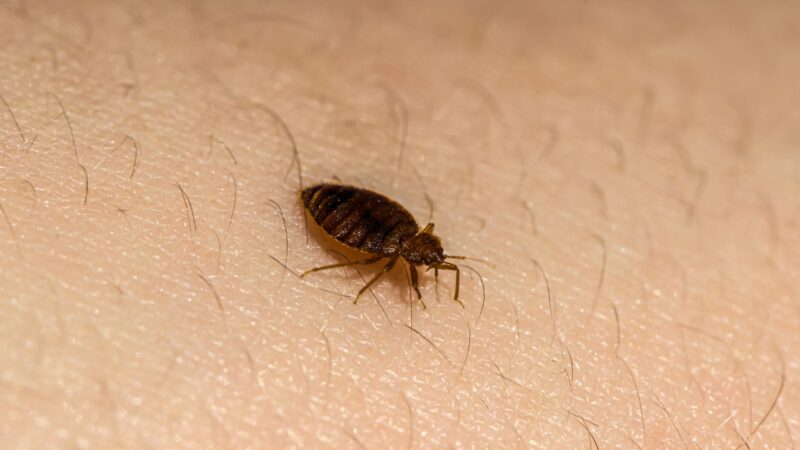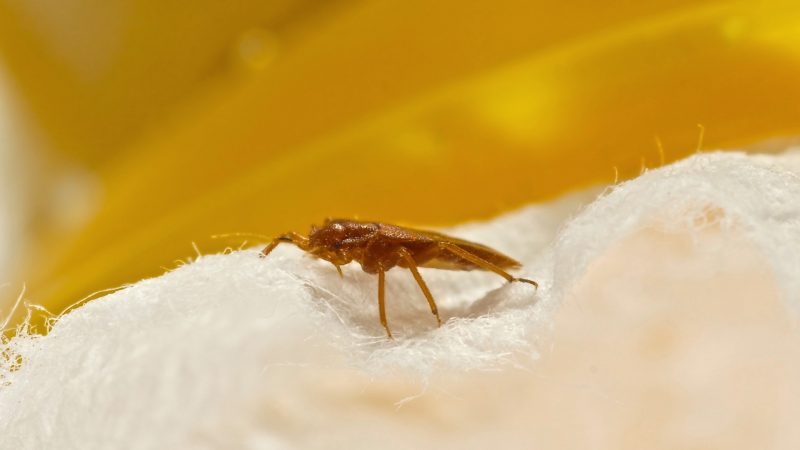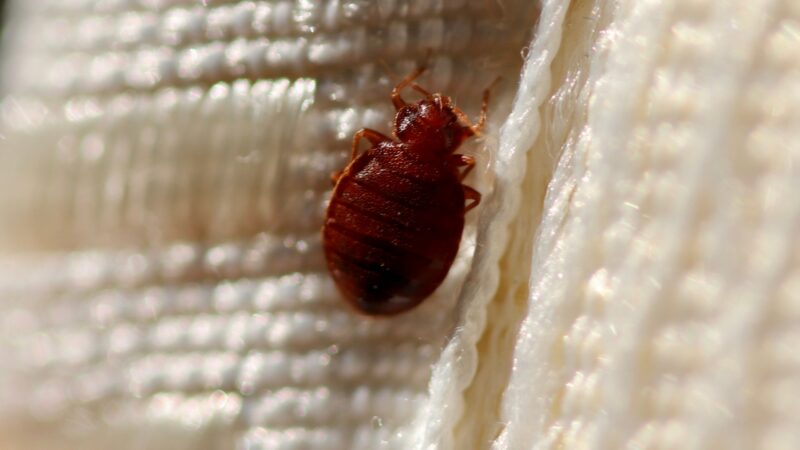Even if you have never dealt with a bed bug yourself, you are probably quite familiar with the insect’s unpleasant features. What are bed bugs? Where did they originally come from? Are they constantly evolving?
What are bed bugs? Bed bugs are insects that have a flattened body with a brownish color and can be around 3/16’’ long. These creatures suck on the blood of warm-blooded animals.
As they say “always know your enemy”. And that’s exactly how you are going to feel after you read this article. Like you know everything about the history of bed bugs.
What Are Bed Bugs?

Bedbugs are tiny, oval-shaped, brown insects that feed on both human and animal blood. They are wingless and can range from 1mm to 7mm, about 3/16 inches long.
The most common bed bug is Cimex lecturlarius. The creatures can be mistaken for cockroaches, beetles, and ticks while they crawl over various surfaces. However, unlike a lot of other insects, bed bugs do not jump or fly.
Female bed bugs can lay hundreds of eggs during their lifetime. It will take only a week for the bed bug egg to hatch. ‘Baby’ bed bugs are called ‘nymphs’. These ones would need around a month to mature. During this time, the bed bugs will shed their skin about 5 times.
These creatures would need to eat in order to grow and survive but unfortunately, bed bugs can live up to a year in cold places without blood! Even if the building is warm, bed bugs can still survive for more than 2 months without sucking on someone.
Bed bugs prefer to live close to a place where they can get food. That’s exactly why the bed is the perfect home for these creatures. Their flattened bodies help the bugs get under mattresses, bed frames, and so on. The insects prefer to hide during the day and be active at night.
Bed bugs do not form nests but they like to stick together. That’s why you can easily find areas with dark stains and marks (excrements) full of eggs, shed skins, and actual insects.
The Origins of Bed Bugs

Bed bugs that currently infest human homes may be traced back to bats according to early genetic evidence. Back when both species lived in caves, scientists have long hypothesized that bats were to blame for bringing bedbugs to the human population. They might have genuinely come from the Middle East.
Long ago, bed bugs feed on the blood of bats that lived in the caves. Bats were the famed parasite’s original hosts, according to scientific research, before they shifted to the human blood diet.
Moreover. two-bed bug lineages that may be traced to Europe include Cimex lectularius and C. hemipterous. Although the roots of both lines may be traced to bats, each line represents two different species. As the Eastern began to colonize, both bed bug lineages spread.
The History of Bed Bugs

The actual name of the species Cimex lecturlarius means ‘bug’ and ‘bed’ or ‘coach’. From that, we know that these creatures were already present in ancient Rome.
Bed bats are said to be first originated and dated back about 3,500 years as a fossilized specimen of the skin-crawling parasite found by Archeologists in Egypt. These insects weren’t new to our planet at that time. However, that is the earliest ‘proof’ of the bed bug’s existence that scientists have managed to discover.
During that time, bed bugs were used for various rituals. Some humans believed that these insects could be used in a potion to cure various diseases, while others cured snakebites. The bloodsucking properties of these insects were used right until the 18th century.
With the growth of civilization, the bugs would also multiply. There is evidence that by 100 A.D., bed bugs made it to the biggest cities in Italy; 600 A.D. – in China; the 1200s – in Germany, and so on.
The bed bugs were brought to America by early colonists. In the early 1700s, there were severe infestations in the English colonies and Canada.
The sailing ships were full of bed bugs. The insects would attack the poor sailors when they tried to sleep at night. People started using arsenic, boiling water, and sulfur to get rid of bed bugs.
Additionally, there is also evidence that bed bugs have been present in Europe since the 11th century. They say that the insects could have been brought to England after the Great Fire of London in 1666 because various supplies were brought from abroad to rebuild the city.
How Were Bed Bugs Treated Throughout History?

The insects don’t really care whether they live in the household of a rich or a poor person. However, in the middle of the 1800s, things changed a bit. The poorest parts of the cities were overcrowded and bed bugs became the most important public enemy. In the wealthiest households, bed bugs slowly started to disappear because of cleaning.
However, throughout the history of mankind, a lot of other methods of treatment were created. In the 1950s, for example, bed bugs actually, at least in the developed countries through the introduction of DDT. This chemical was created in order to help people eliminate the populations of different bugs. You would have to spray it all over the bed and the bed bugs would not come close to the place for a whole year.
Those insects that didn’t die from the chemical would die of starvation. In 1972, it was no longer allowed to use DDT as a pesticide. It was bad for the insects but it could also potentially cause cancer in humans. Moreover, researchers thought that DDT could also harm wildlife, especially birds.
Bed bugs can mutate and evolve. They became resistant to DDT and can do the same trick with practically every pesticide. What we certainly should do, is learn from our own mistakes.
That means keeping our houses extremely clean, thoroughly checking the places where we need to stay (like hotels, for example), and treating the infestation as soon as possible, if we spot one. Make sure that the new clothes and furniture that you bring home are not infested (especially, if those are secondhand).
Are Bed Bugs An Exceptional Representation of Evolution?

An international team of scientists worked for 15 years in order to find more answers to our questions about bed bugs. So, the scientists had to cooperate with exterminators. The latter would preserve some insects in alcohol and then ship the bed bugs to the laboratories. After that, the scientists focused on the DNA of the creatures to find the answers.
There were a few things that the team discovered that are pretty shocking. For example, a new species of bed bug emerge about every half a million years. The chances are high that a new species won’t conquer humans during your lifetime. But the growing number of people on our planet will become the perfect ‘feasting table’ for all sorts of bloodsucking creatures.
We already know that bed bugs can change hosts. But it doesn’t mean that once the species decides to switch its attention to bats, for example, it won’t be able to come back to humans, at one point.
Bed bugs might not specialize in the new host when they decide to jump to it. Some prefer to maintain the ability to jump back to their old host. That is a very smart evolutionary move.
We are certain that the bed bugs that suck human blood today are much older than people. That means initially, these pets had another host and then chose to jump to humans at one point in history.
It is extremely important to study the evolution of bed bugs. Firstly, if we know the past, we can predict what to expect from these creatures. This knowledge will help scientists come up with better pesticides.
Secondly, the more we know about bed bugs, the more we find out about other insects. Soon, we will be able to understand how different insects became carriers of dangerous diseases, as well as how these pests evolved and started using different hosts.
List of Sources
Potter, M. Bed Bugs. Extension Entomologist, University of Kentucky College of Agriculture.
Booth. W., Balvín, O., Vargo, E., Vilímová, J., Schal, C. (2015). Host Association Drives Genetic Divergence in the Bed Bug, Cimex Lectularius. University of Tulsa.
Bedbugs. Mayo Clinic.
- How to Get Rid of Copperheads | Practical Guide - August 27, 2023
- How to Get Rid of Corn Snakes | What Makes Them Aggressive? - August 27, 2023
- How to Get Rid of Alligators | Safety Measures and Removal Methods - July 16, 2023
